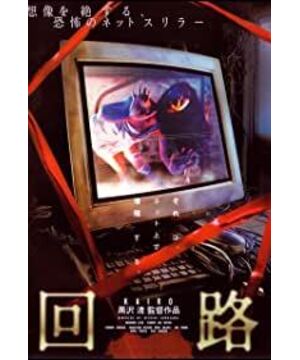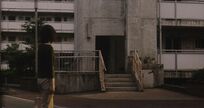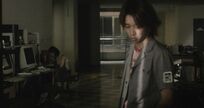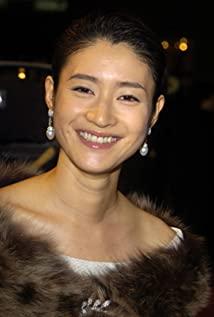2001 was a magical year in cinematic history, with directors seemingly refocusing on what they knew best after a collective frenetic portrayal of the millennium apocalypse crisis. However, Kiyoshi Kurosawa, who has always been stern and restrained, went the opposite way, and still took the trouble to use the outer core of horror films to describe the fright that belonged to that era. This is no less than his persistent pursuit as a writer and director. It can also be seen as a kind of wake-up call. A symbolic time node is irresistibly quickly forgotten in the process of history, and the collective loneliness it reflects is still there. We spilled over each other.
In Kurosawa's films, there is no lack of appropriation of some highly modern academic concepts. If in "The Way of the Snake", such appropriation still remains in the parallelism of film content and academic concepts in form, the psychological concept that appeared in "The Loop" is very subtly similar to the computer, the most innovative concept in the new century. The images with typical meanings go hand in hand and become an indispensable ideographic tool for the film.
It is worth mentioning that Kiyoshi Kurosawa has a unique film perspective on the field of psychology. In his most famous work, "The Holy Rule of X", psychology appeared as an academic fringe concept of hypnosis, constantly flogging the hearts of the audience through a series of horrific crimes. After 2000, "Serious" and "The Loop", the focus invariably pointed to the other extreme of the anti-mainstream - psychic.
Ghosts are the turn of the century Kurosawa's favorite imagery in his films. In the view of the Japanese film scholar Tadao Sato, the ghost is depicted as a sad existence. The common screenwriting concept of this Japanese film is essentially a projection of a group social mentality: in a mechanized and technological civilization, turbulent jumps In the age of rising trend, it is easy for people to fall into a kind of doubt about the remnants of individual personality. The Japanese horror films produced in the form of strange stories, etc., have the same answer to this problem, that is, no matter how they are abused, deformed, and become strange, they still have to claim that they are still human or have human beings. mind.
However, Kiyoshi Kurosawa, who has a very distinct personal style, has taken a completely different path. Although he firmly believes in the proposition that individuals may retain their own will, the world finally depicted in his films still follows a An extremely pessimistic trend, as a "minority" with humanity, when a collective doomsday is unavoidable no matter what, they can only sit on an ark that symbolizes hope and wander aimlessly on the vast sea.
Such pessimism continued until 2003's "Bright Future" eased. In this film, which abandoned all elements of the horror genre, Kurosawa questioned the fundamental rationality of human civilization, but gave such a "wrong" civilization through the surreal concept of jellyfish collectively swimming from the inland river to the sea. possibility of being rebuilt.
In "The Loop", where the elements of the horror genre are most vividly used, the doomsday complex still retains its hideous face, and it is approaching us step by step in the spatial scheduling that Kurosawa is best at. This is most intuitively reflected in the few scenes where ghosts appear in the film.
Interestingly, perhaps out of rejection of ordinary horror genre films, Kiyoshi Kurosawa directly and artificially downplayed the most visually striking part of the ghost element, that is, the extremely terrifying appearance of the ghost itself. In the more famous "The Grudge" at the same time, ghosts still force the audience to react with fear in their pale and bloody images, which is actually the traditional horror idea that Hitchcock-style horror films have always adhered to ( It is said that every time Xifa makes a movie, he will prepare multiple models of terrifying images, and select them according to the degree of shock caused by the heroine of the movie).
However, in "The Loop", the ghost no longer has a terrifying physical image. Instead, it is the spatial position of the ghost in a one-act shot to show its horror. Compared with other predecessors of Hikage, Kurosawa Kiyoshi has no similarity in film concept with his master with the same surname, Kurosawa Akira, but he is more like the Naruse Mikio who is obsessed with showing the relationship between characters in a closed space. , although the kernels of the films they focus on are not in the same dimension at all.
Moreover, Kiyoshi Kurosawa's creativity in the use of "space" in the film is extremely varied. He can not only use the change of the depth of field to present the so-called "stunned" feeling, but also skillfully use the It breaks the objective physical laws of ghost movement, and makes it approach the camera step by step at a jumping rhythm—that is, gradually approaching the audience, and beautifully completes a thriller.
Returning to the theme of the film, Kiyoshi Kurosawa insisted on showing the time bombs placed in the hearts of human beings when a completely new era of human civilization is approaching. This proposition has extremely high requirements on the structure of the film. The Loop's approach to this is an almost silent flashback. Koji Yakusho, the most well-known in the cast, actually only appears in the flashback at the beginning of the film and at the end of the film. When the main part of the film is finished, we suddenly realize that the opening ship is a similar " A side view of the doomsday imagery of Noah's Ark.
In addition, the story structure of the main part of the film is basically the same as that of the previous works ("X Sanji", "The Shout", etc.) The gradual infection of group loneliness is spreading.
Are the established rules of the world we live in unbreakable? This is a central question that Kurosawa is accustomed to throwing in all of his films, and it is clear that his cinematic world is constantly in a state of extreme fragility, ready to fall apart in destruction.
This pessimistic concept is developed to the extreme in "The Loop". The destruction of the existing seemingly indestructible civilization often occurs in a series of minimal wars without gunpowder smoke. In the course of modern history, human beings who have been devoured by a sense of loneliness and alienation for a long time are self-evidently sensitive and easily shaken in their wills. Coming soon, the world will be turned upside down.
View more about Pulse reviews










